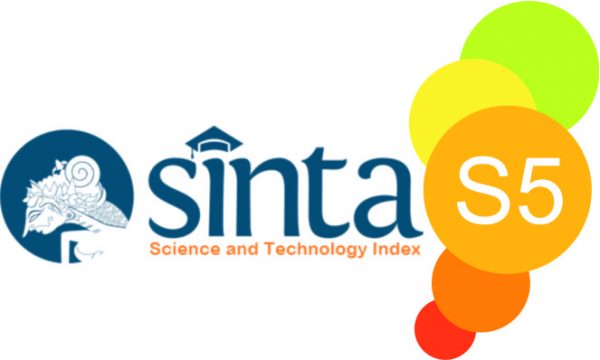RISIKO INFEKSI Mycobacterium tuberculosis PADA ORANG YANG TINGGAL SERUMAH DENGAN PENDERITA TUBERKULOSIS DI MAKASSAR
Abstract
Penyakit tuberkulosis (TB), khususnya TB paru, mudah menular melalui udara dari droplet yang mengandung bakteri Mycobacterium tuberculosis (MTB) yang dikeluarkan oleh penderita tuberkulosis pada saat batuk, bersin, atau berbicara. Orang sehat yang tinggal serumah dan berinteraksi dalam kurun waktu relatif lama dengan penderita TB berpotensi terpapar bakteri MTB. Penelitian ini bertujuan untuk mengetahui risiko infeksi MTB pada orang yang tinggal serumah dengan penderita TB paru. Dalam penelitian ini digunakan sebanyak 88 responden yang merupakan kerabat penderita TB paru yang telah tinggal serumah dengan penderita TB paru tersebut selama lebih dari 24 jam dan tidak menunjukkan gejala-gejala TB aktif. Pemeriksaan IGRA (Interferon-Gamma Release Assays) digunakan untuk mengetahui adanya infeksi MTB pada responden. Sebanyak 42 responden (47,7%) menunjukkan hasil pemeriksaan IGRA positif dan 46 responden (52,3%) dengan IGRA negatif. Jenis kelamin (perempuan/laki-laki RO= 1,650, 95% IK= 0,701-3,884, p= 0,344) dan umur (>40/<20 RO= 2,923, 95% IK= 0,726-11,762, p= 0,439; >40/20-40 RO= 1,923, 95% IK= 0,763-4,844, p= 0,439) tidak signifikan sebagai faktor risiko infeksi MTB. Meskipun demikian, orang yang tinggal serumah dengan penderita TB sangat berisiko untuk tertular dan terinfeksi bakteri MTB. Oleh karena itu, deteksi dini adanya infeksi MTB dalam tubuh seseorang yang berisiko tertular penyakit TB sangat bermanfaat untuk mencegah perkembangan menjadi penyakit TB aktif.
Keywords
Full Text:
PDFReferences
World Health Organization (WHO). Global Tuberculosis Report 2018. Available at: https://www.who.int/tb/publications/global_report/en/
Knechel NA. Tuberculosis: Pathophysiology, Clinical Features, and Diagnosis. Crit Care Nurse. April 2009; 29(2): 34-43.
Delogu G, Sali M, Fadda G. The Biology of Mycobacterium tuberculosis Infection. Mediterr J Hematol Infect Dis. 2013; 5(1): e2013070.
Zumla A, Raviglione M, Hafner R, Rein Fv. Review: Current Concepts Tuberculosis. N Engl J Med. 2013; 368: 745-55.
Ahmad S. Pathogenesis, Immunology, and Diagnosis of Latent Mycobacterium tuberculosis Infection. Clin Dev Immunol. 2011; 2011: 814943.
Jasmer RM, Nahid P, Hopewell PC. Latent Tuberculosis Infection. N Engl J Med 2002; 347: 1860-1866.
Mack U, Migliori GB, Sester M, Rieder HL, Ehlers S, Goletti D, et al. LTBI: Latent Tuberculosis Infection or Lasting Immune Responses to M. tuberculosis? A TBNET Consensus Statement. European Respiratory Journal. 2009; 33: 956-973.
Kasprowicz VO, Chuchyard G, Lawn SD, Squire B, Lalvanis A. Diagnosing Latent Tuberculosis in High-Risk Individuals: Rising to the Challenge in High-Burden Areas. J Infect Dis. 2011 Nov 15; 204(Suppl 4): S1168–S1178.
Kiazyk S, Ball TB. Latent tuberculosis infection: An overview. Can Commun Dis Rep. 2017 Mar 2; 43(3-4): 62–66.
Ravn P, Munk ME, Andersen AB, Lundgren B, Lundgren JD, Nielsen LN, et al. Prospective Evaluation of a Whole-Blood Test Using Mycobacterium tuberculosis-Specific Antigens ESAT-6 and CFP-10 for Diagnosis of Active Tuberculosis. Clin Diagn Lab Immunol. 2005 Apr; 12(4): 491-6.
Kalantri Y, Hemvani N, Chitnis DS. Evaluation of Whole Blood IFNγ Test Using PPD and Recombinant Antigen Challenge for Diagnosis of Pulmonary and Extra-Pulmonary Tuberculosis. Indian J Exp Biol. 2009; 47: 463–468.
Cellestis. QuantiFERON TB-Gold (in-Tube Method): The Whole Blood IFN-gamma Test Measuring Responses to ESAT-6, CFP-10 & TB7.7 Peptide Antigens. Cellestis Inc. USA. January 2009.
Hauck FR, Neese BH, Panchal AS, El-Amin W. Identification and Management of Latent Tuberculosis Infection. American Family Physician. May 15, 2009; 79(10): 879-886.
Centers for Disease Control and Prevention (CDC). TB Elimination: The Difference Beetween Latent TB Infection and TB Disease. Available at: https://www.cdc.gov/tb/publications/factsheets/general/ltbiandactivetb.htm
de Perio MA, Niemeier RT. Evaluation of Exposure to Tuberculosis Among Employees at a Medical Center. J Occup Environ Hyg. 2014; 11(6): D63–D68.
Narasimhan P, Wood J, Maclntyre CR, Mathai D. Risk Factors for Tuberculosis. Pulm Med. 2013; 2013: 828939.
Erawati M and Andriany M. The Prevalence and Demographic Risk Factors for Latent Tuberculosis Infection (LTBI) Among Healthcare Workers in Semarang, Indonesia. Journal of Multidisciplinary Healthcare. 2020; 13: 197 – 206.
Shanmuganathan R and Shanmuganathan ID. Clinical Manifestation and Risk Factors of Tuberculosis Infection in Malaysia: Case Study of a Community Clinic. Glob J Health Sci. 2015 Jul; 7(4): 110–120.
Ahmad S. Pathogenesis, Immunology, and Diagnosis of Latent Mycobacterium tuberculosis Infection. Clin Dev Immunol. 2011; 2011: 814943.
Reichler MR, Khan A, Sterling TR, Zhao H, Moran J, McAuley J, et al. Risk and Timing of Tuberculosis Among Close Contacts of Persons with Infectious Tuberculosis. The Journal of Infectious Diseases. 2018; 218(6): 1000-1008.
DOI: http://dx.doi.org/10.30872/jkm.v7i1.3892
Refbacks
- There are currently no refbacks.
Copyright (c) 2020 Jurnal Kedokteran Mulawarman

Jurnal Kedokteran Mulawarman by Faculty of Medicine Mulawarman University is licensed under a Creative Commons Attribution-ShareAlike 4.0 International License.









